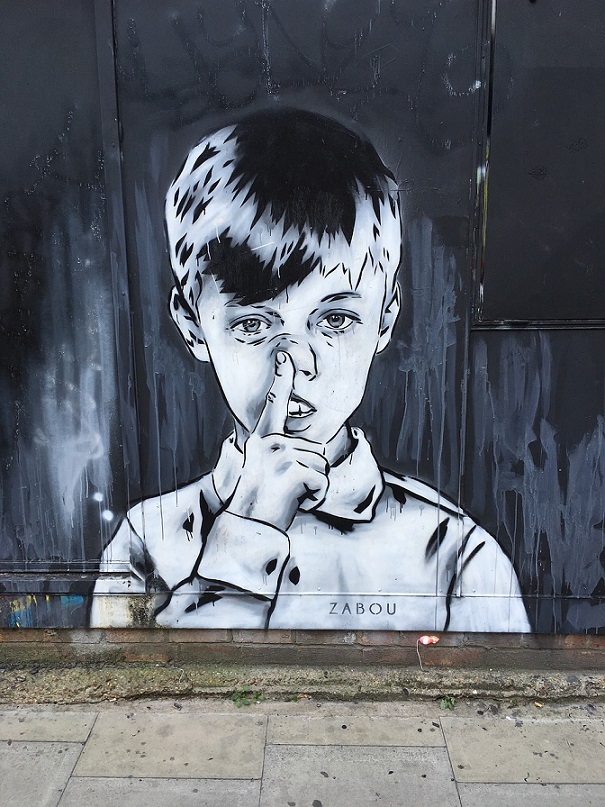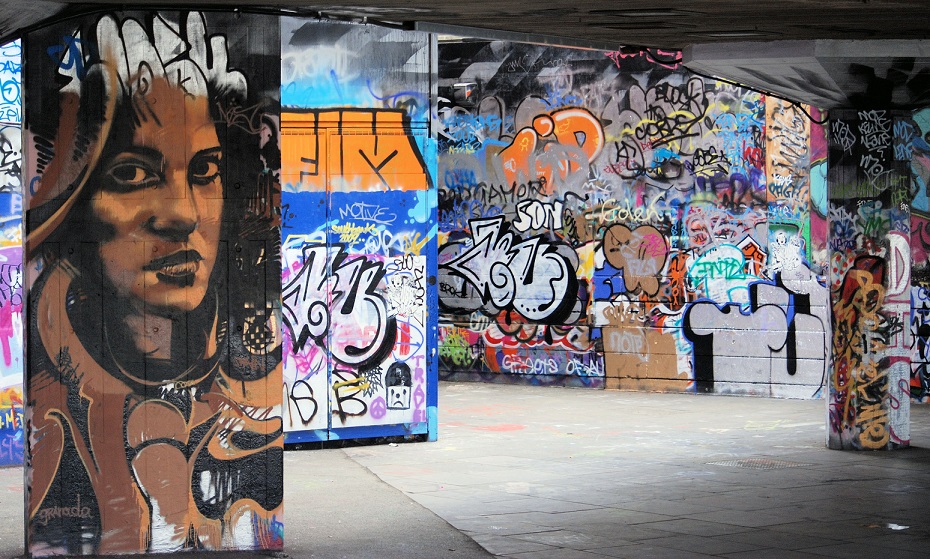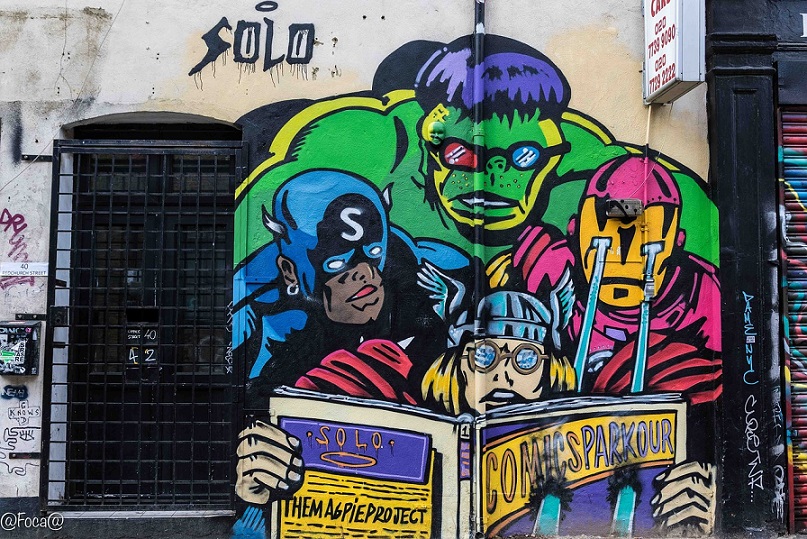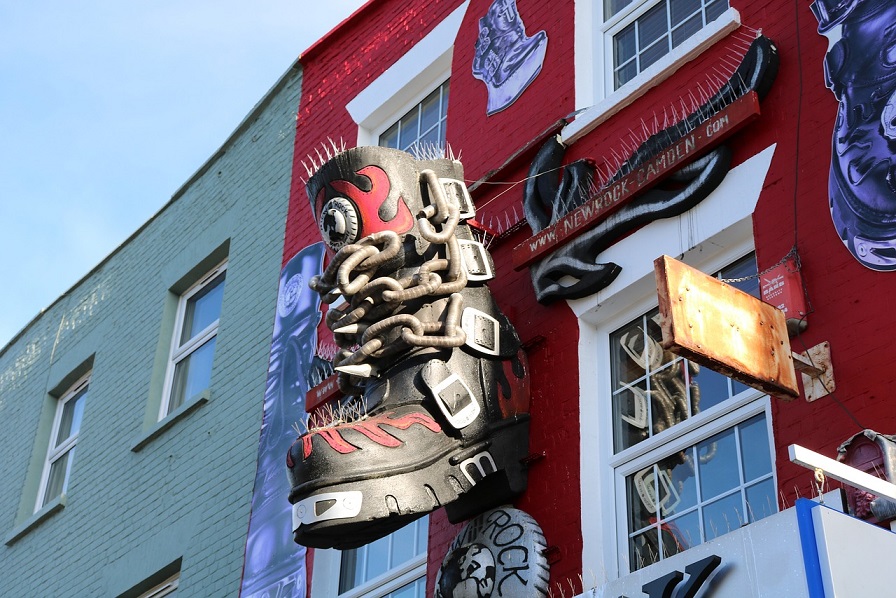They are works of art but aren’t displayed in galleries. They are critiques that silently shout from any wall, door or shutter of the city. They are battles that use spray-paints and creativity as weapons.
.
 Benjamin Serra
Benjamin Serra
.
For a few years now the capital of England has been able to boast of having in its streets some of the most important works or urban art in the whole world, adding to the attraction of the city.
One only needs to cross the so-called East End of the city, Hackney, Shoreditch, Bricklane or Bethnal Green to find true works of art in the streets.
The culprits are graffiti artists that have gained fame for their original style, however some of them remain anonymous. Some just want to decorate while others use it as a form of protest.
Although the graffiti craze began in the sixties and seventies, it was in the nineties, and now in the start of the 21 century, that Banksy, an anonymous street artist, started to leave his mark on the walls of the city.
Despite details of his personal life and identity remaining unknown they believe that he is from Bristol and around 30 years old. But the truly important thing is what he communicates with his artworks. They are satirical paintings, and social critiques of popular culture, globalisation, authority, current society and morality.
In fact, some of his most well know pieces make reference to these aspects. Two English policemen kissing (Brighton, 2005), a guard urinating up a wall (London, 2004) or two kids playing with a ‘No Ball Games’ sign (London, 2009).
Unfortunately, it is not so easy anymore to locate some of these mythical works owing to the lack of awareness of their value. Mostly due to contempt towards them or because of cleaning and maintenance many have been destroyed.
 For this same reason it is difficult to determine what works remain intact in alleyways or those which we will only experience through photographs.
For this same reason it is difficult to determine what works remain intact in alleyways or those which we will only experience through photographs.
Nevertheless what some consider scrawling in need of elimination others still treat as collectors’ items.
In fact, one of the final works of the artist that showed an Asian child manufacturing flags of the United Kingdom as a critique of the celebration of the Jubilee of Queen Elizabeth, which was to be found in Haringey, has disappeared from the wall altogether. The truth is that it will be auctioned off in Miami for an estimated price of between 500,000 and 700,000 dollars.
The neighbours of the area aren’t please by this, who boasted of having one of the paintings of the famous graffiti artist, which some have accused of selling out, for having worked for companies such as MTV, Puma and Greenpeace.
King Robbo is one of the graffiti masters against Banksy. In 2009 he began a battled between both of them when the anonymous artist painted over one of the worn drawings of Robbo.
From that moment the supporters of Robbo attacked the works of Banksy. However currently the artist is in a coma due to an accident and Banksy has ended the battle, dedicating one of his pieces to him.
 Unmistakeable styles
Unmistakeable styles
Many of these artists are recognised for their highly distinct styles.
This is the case with Stik: designs based on dolls and children with simple lines, but amazingly expressive ones that decorate the streets of Shoreditch.
A couple formed by an Islamic woman and a western man (Princlet Street), two shouting dolls (Grimsby Street), a man watching one of the security cameras of the London streets (Hanbury Street) or the scene of a child looking like a sleeping man painted on the shutter of a shop (Turville Street), these are some of their most representative works. The importance of these artists isn’t just appreciated by the critics or the local community but also by some politicians who have began to boast of having some of their pieces on the streets of the city.
For example the case of David Cameron, who gave the president of the United States, Barrak Obama, a picture with one of the paintings of the graffiti artist Eine.
The work ‘Twenty First Century City’ is like many of the works of Ben Eine in that it is characterised by using letters of varying fonts. On the streets this idea is translated artistically in messages of great size like ‘Change’ (Old Street), ‘Power Up’ (Hackney Road) or the shutters of Middlesex Street with huge letters of the alphabet.
 And although each one has its own style and is well defined, all of these urban artists have something in common. They are a protest on the wall. A critique in colour. A discussion in plain sight of everyone.
And although each one has its own style and is well defined, all of these urban artists have something in common. They are a protest on the wall. A critique in colour. A discussion in plain sight of everyone.
An ephemeral art or a lasting art. It all depends. Could it be that the graffiti we want to see tomorrow has already disappeared? But surely, without a doubt, come the morning sun, there will be a new work of art within our reach, one that has emerged silently during the night.
The Prisma’ memoirs.
(Translated by Adam Brown – Email: AdamBrown@live.com) – Photos: Pixabay and PxHere












.jpg)












